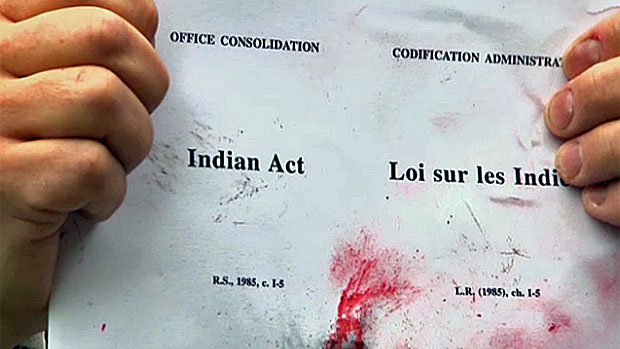The Indian Act (1876 to Present)
The Indian Act is a piece of explicitly racist legislation passed in 1876. It was an attempt to amalgamate all previous legislation related to indigenous populations. Though it had undergone a series of amendments, the bulk of the 1876 bill remains in place. The Indian Act serves to define the relationship between Indigenous peoples in Canada and the Canadian government. What is more is that, the Act defines what constitutes “Indian” culture, polices and identity. It divides and then consolidates people of disparate nations, languages and cultures into three groups: Indian, Métis, and Inuit.
Legacy
What it did was to strip land rights from indigenous peoples and transfers them to the Federal government with final authority invested in the Minister of Indian and Northern Affairs. The reserve system came out of this Act, leaving indigenous people as tenants of the government, and clearly the government of Canada is a terrible landlord. It also imposed a system of government on the reserves in the form of the Band and the Band Council. This was intended to replace and finally eliminate traditional forms of government as a way to assimilate indigenous people through an oppressive “civilizing” discourse. Indigenous culture was viewed in this legislation as a barrier to becoming a member of settler Canadian society. To this end they also went about banning ceremonial practices (ex. The Pot Lache, which was commonly practiced on the west coast),and by forcing generations of indigenous children into the residential school system.
To accomplish this program of elimination through bureaucratic attrition, the Canadian government pushed various Enfranchisement schemes that would strip Indigenous people of their rights (or Status) and absorb them into Canadian body politic. For example, if they had a profession, a university education, or were war veterans. As a matter of course the wives and children of Enfranchised men were also forced out. Women also lost their Status at an alarming rate and were exiled from their communities. After a long and protracted struggle Indigenous Women forced the Federal government to amend the Indian Act in 1985. Bill C-31 allowed somewhere in the region of 100 thousand Women to regain Status and included and contained a second generation cut off.
(For more information please see the upcoming article on the fight for Bill C-31 and Gender discrimination in the Indian act)




